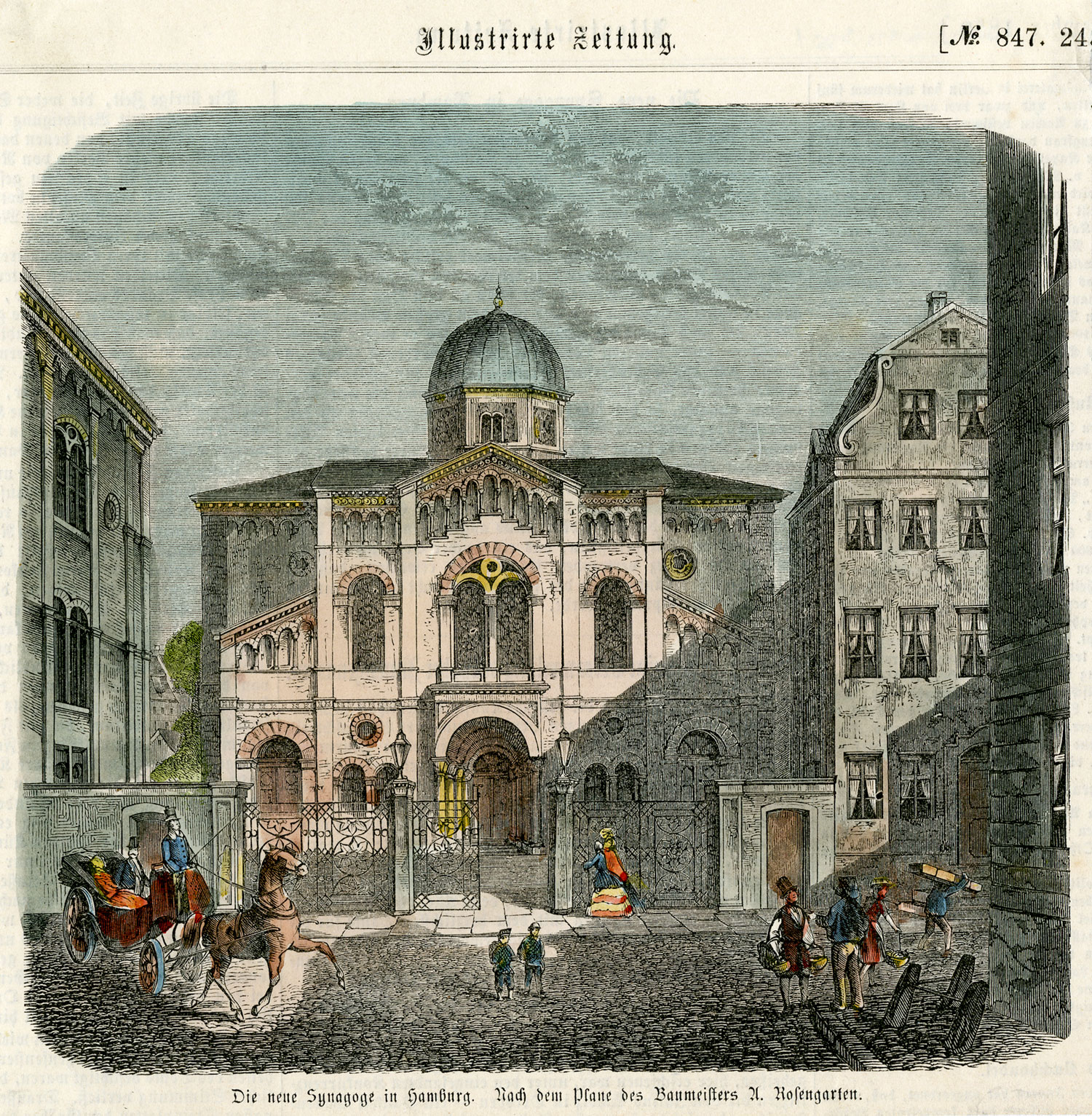The Kohlhöfen Synagogue, located at Kohlhöfen 17 and 18 in Hamburg, built between 1857 and 1859, was designed by Albrecht Rosengarten (1810–1893), the first Jewish architect in Germany and the first German Jew to design synagogues. This building, like the synagogue Rosengarten designed in 1839 for the Jewish community of Kassel, Germany, is in the Romanesque Revival style, very much in keeping with popular tastes at the time.
The yellow brick Hamburg synagogue was originally meant to be hidden from view behind a Jewish school, similar to the Reform Poolstrasse synagogue built in the previous decade. During the planning stage it was decided, however, to make it visible through a gated courtyard from the street. This was the first Hamburg synagogue so constructed, and this new public face of Judaism was part of both a more tolerant Christian environment and a more concerted effort by German Jews in the second half of the 19th century to achieve the full rights of citizenship. No symbols or inscriptions on the exterior identify the building as a Jewish house of worship. This lack of clarity disturbed some Christian officials, who feared that Christians might mistake the building for a church. This need by some for greater distinction between church and synagogue led to the use and eventual popularity of the so-called Oriental or Moorish style in synagogue design. The Kohlhöfen Synagogue was one of several that served Hamburg’s traditional or Orthodox community, but over time, as the Jewish population moved away, it fell into disuse and in 1934 was torn down.
